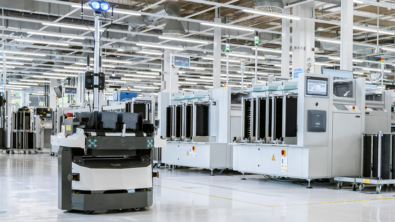Building the 5G architecture of tomorrow with Siemens EDA

What does it take to build the awesome capabilities of 5G communications? With a grand vision of bringing everyone and everything together including machines, objects and devices, the task is unlike any of the infrastructure that came before it.
The 5G expectation is to leverage artificial intelligence and machine learning at most points in the network, which enables the buildout of smarter, connected everything – smart devices, smart businesses, smart factories, as well as the promised autonomous vehicles with the ability to communicate and guided via smart cities and infrastructure.
The future is looking pretty smart!
When designing for the complexities of the technologies involved, it was imperative to base 5G on open standards. Previous-generation networks were defined and created by only a few cellular operators worldwide, leaving telecommunications companies with little choice but to purchase equipment at a high premium from one of the few manufacturers. This time, telecommunication companies demanded that industry standards be used at all layers of the network and that an open data packet protocol be developed so that more companies could compete to develop ever-more advanced 5G network equipment.
Another challenge is achieving the highest performance per watt for both the infrastructure equipment and the edge devices connected to the 5G infrastructure while maintaining high reliability.
5G organizations are calling for a 10x power reduction per bit yet 5G is expected to consume an estimated 50 to 70 percent more power worldwide than 4G communications. This is because the 5G wireless communications infrastructure and the many nodes/edge devices that will communicate through it are sophisticated systems on chip (SoCs), which increasingly incorporate machine learning embedded processing engines to make 5G systems more efficient.
Designing and verifying these SoCs and the systems they power can be a complex process. They must be functionally correct and validated and tested to work properly at the system and software levels as well as in scenarios of operation.
5G innovation starts with system IC architecture exploration
Designing and developing an ideal IC architecture for 5G infrastructure and applications offers many routes to success. Part of the white paper: How Siemens EDA helps you engineer smarter 5G communications systems faster touches on these aspects which include:
- Design teams can use FPGA–based ICs for early, first-to-market deployment in 5G infrastructure, with the additional benefit of field programmability.
- 5G is inherently an algorithm-heavy technology, therefore high-level synthesis, power analysis and FPGA-based prototyping is an option design teams can explore.
- Design for test enables post-silicon testing equipment to more easily identify problems with individual chips before they are released to market.
- Embedded analytics is a relatively new and progressive option for IC architecture design. It enables architects to embed IP into their ICs to monitor and analyze a variety of characteristics, such as performance, power consumption, thermal analysis, reliability, and security.
- A 2.5D/3D IC configuration enables companies to place monolithic ICs and a growing number of purpose built “chiplets” side by side on a silicon interposer for 2.5D IC configuration or stack them on top of each other in a 3D configuration. This enables companies to more easily integrate different varieties of ICs.
- Silicon photonics is an emerging IC technology with a great deal of investment in the venture capital community and promising to take communications to higher levels of performance. Silicon photonics brings fiber optics directly onto layers of ICs, thereby forgoing the need for outboard IO that moves signals from fiber optic cable to copper.
Ready to learn more about how Siemens EDA is playing a role in helping companies solve the 5G architectural challenges?
Download How Siemens EDA helps you engineer smarter 5G communications systems faster.
Discover how Siemens Xcelerator helps companies turn complexity into a competitive advantage.


